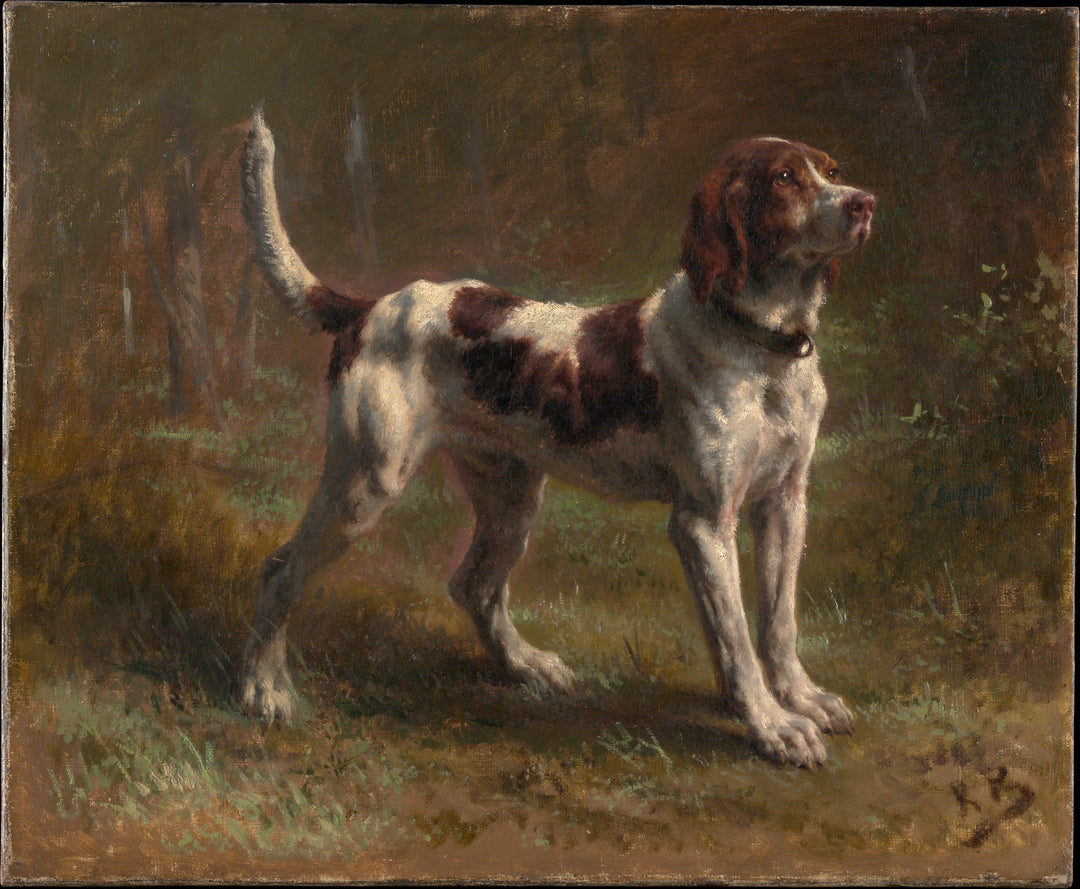
A Limier Briquet Hound - Rosa Bonheur
| Author: | Rosa Bonheur |
|---|---|
| Title: | A Limier Briquet Hound |
| Original location: | The Metropolitan Museum of Art, New York, USA |
| Year: | 1856 |
In "A Limier Briquet Hound," Rosa Bonheur portrays an English Pointer (a hunting breed especially valued in nineteenth-century England for its keen sense of smell and steady stance) with near-scientific precision, capturing it in the middle of the forest with tense musculature and head held high as if it has just caught a scent. The light filtering through the trees caresses its white coat with brown spots, creating an atmosphere that highlights both its elegance and functionality. This study is not merely an exercise in observation, but an affirmation of the bond between form and function: Bonheur neither embellishes nor dramatizes the animal, simply presenting it as it is, in a working posture, almost in a state of alert.
Compared to "Metamort and Flambeau", where two hunting dogs pose in a more controlled indoor setting, this painting reveals the contrast between the static nature of the double portrait and the natural vitality of the individual dog. While in "Study of Two Dogs" the Grand Griffon Vendéens are shown resting in a neutral environment, with no reference to the countryside, here the setting is an active part of the message: the forest is their habitat, and the animal, its interpreter. "Barbaro After the Hunt", on the other hand, offers a melancholic look after the action, depicting the dog exhausted and chained; Bonheur there articulates the vulnerability of the hunter once his mission is over, in contrast to the lively tension we see in the briquet hound.
The work belongs to Realism, a movement that challenged the distortion and rejection of Romanticism towards reality, embracing the everyday, the light in its original state, and committing to depict visible truth, even in its most mundane or raw aspects. Bonheur brought this principle to the animalist sphere, elevating working dogs to the status of portrait subjects with the same dignity reserved for human portraits. Her influence extends to prominent artists like Briton Rivière and to contemporary scientific illustration, where anatomical precision is inseparable from respect for the subject.